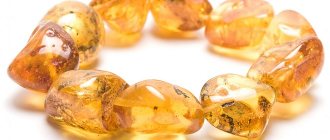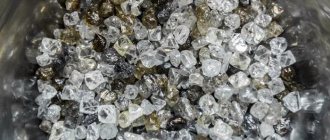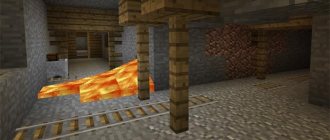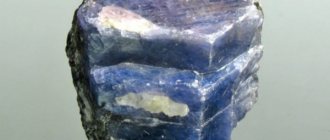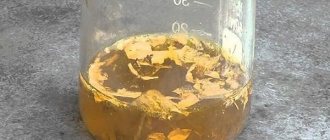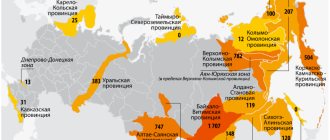People have always worshiped jewelry. Stones and metals not only conquered their minds, but also became the cause of wars. Some were ready to give their lives for them, while others were ready to take it away. Which jewels have almost always been the most valuable? Of course, it's gold and diamonds. They have even become a household name in their category. With gold, everything is more or less clear. It is mined, smelted, and so on, but what path does a diamond take from the first shovel stuck into the ground at the mine to the royal crown is a big question. Moreover, gold has always been mined in the same way, plus or minus, which cannot be said about diamonds. There really is room for improvement and development in terms of technology.
They are too beautiful not to be considered precious.
- 7.1 Diamond Kohinoor
Where do diamonds come from?
First, let's generally figure out where diamonds come from and how they appear in the depths of our planet. If you are already familiar with this or it is not very interesting to you, just scroll to the next point.
Diamond is the hardest mineral in the world . There is even a so-called Mohs scale, which is often used to determine the hardness of objects. Most often, recently, this scale can be encountered when determining the resistance of a smartphone screen to scratches. Without going into detail, it consists of 10 steps in which the hardness corresponds to the hardness of various substances - from talc to diamond. That is, diamond is considered the standard of hardness.
Diamond is a crystalline modification of pure carbon and is considered one of the most expensive stones. Transparent stones and those with a slight shade of blue are especially prized. The remaining impurities are considered defective, but sometimes they are also valued very highly.
The main places where diamonds are formed are areas of continents where no geological activity has occurred for a long time. This process occurs at great depths - approximately from 100 to 200 kilometers. This depth was chosen based on the conditions that are created there.
Man cannot create such beauty. Only nature is capable of this.
The temperature at such a depth reaches 1,500 degrees Celsius , and the pressure often exceeds 40,000 atmospheres . It is precisely this pressure and temperature that can change the crystalline structure of carbon so much that this stone turns out to be on the verge of fantasy.
Artificial diamonds have been produced in laboratories since the 60s of the last century. Recently, experiments have been carried out on the production of diamonds by creating pressure through a directed explosion. But all this is more reminiscent of some kind of alchemy. Although formally some insignificant diamond particles do form.
It must be said right away that no one goes to such depths to extract diamonds, since over billions of years they gradually come out on their own. They do this by being carried to the surface with kimberlite magma. This is how primary diamond deposits are formed.
And yet they are beautiful.
The definition of “kimberlite pipes” appeared after the first such pipe was discovered in the Kimberley province in southern Africa. They began to be called kimberlite, and the rock that contains diamonds was called kimberlite.
Now there are thousands of kimberlite pipes , but diamond mining is not profitable in all places. There are only a few dozen places in the world where it really makes sense to do this.
This is what a kimberlite pipe looks like.
Application
Diamonds that are obtained from kimberlite pipes or placers are sent not only to the jeweler’s table, contrary to popular belief. Half of them, for some reason not suitable for cutting, find technical application. After all, this mineral is in great demand not only because of its charming appearance, but also because of its unique physical properties.
As already mentioned, it is the hardest stone in the Universe. Therefore, it is needed in construction and industry.
It makes excellent tools for cutting other materials. Even diamond chips applied to a file or disc of a grinding machine greatly increases their reliability and functionality. If you need to carefully cut or pierce any hard material, then you won’t find a better diamond for this task. It is even used to drill holes in other rock formations.
To reduce the cost of tools that use industrial diamonds, several methods were invented to synthesize them from carbon. Synthetic counterparts practically do not differ in quality from real ones, and much time and effort are not spent on obtaining them.
Read about the difference between a diamond and a diamond here →
Diamond mining sites
Countries that have a lot of diamonds are very disparate in their level of economic development, social sphere, religion, and so on. However, they were lucky to be in the very places where diamond mining really makes sense.
Countries where diamonds are mined
- Russia - 40.32 million carats per year
- Congo - 23.20 million carats per year
- Botswana - 20.50 million carats per year
- Australia - 13.96 million carats per year
- Canada - 13.3 million carats per year
- Angola - 8.7 million carats per year
- South Africa - 8.3 million carats per year
Where are diamonds mined in Russia?
- Yakutia
- Arhangelsk region
- Murmansk region
- Karelia
- Perm region
ALROSA
Since 1992, the legal successor of the Soviet "Yakutalmaz" has become a joint stock company with a state controlling stake. Since its formation, ALROSA has received a state monopoly on exploration, mining and diamond processing activities in the Russian Federation. This group of diamond mining and processing enterprises produces about 98% of all diamonds in Russia.
Today ALROSA has six mining and processing complexes (GOK), four of which are part of the group. These are Aikhal, Udachninsky, Mirny and Nyurbinsky mining and processing plants. Two more plants, Almazy Anabara and Arkhangelsk Severalmaz, are subsidiaries of ALROSA. Each mining and processing plant consists of one or more diamond deposits and a complex of special equipment and processing facilities.
From all mills in Russia, diamonds, no matter where they were mined, are delivered to the Diamond Sorting Center. Here they are assessed, weighed and initially processed. Then the rough diamonds are sent to Moscow and Yakut cutting plants.
How to find a diamond deposit
The diamond industry has one big problem. At one time, exploration of deposits was carried out in secret. That is why not all methods for determining their occurrence are still known. Of course, there are modern methods, but those who do this are still in no hurry to share their secrets, since there is a lot of money at stake.
The greatest likelihood of finding diamonds is in the area of volcanoes that have been extinct for a long time. It is there that a “natural laboratory” is often created, in which there will be all the conditions for growing these minerals and delivering them to the surface. Diamonds can also be found in the area of river beds that carry igneous rocks. Much attention should also be paid to meteorites, where diamonds are often found at their fall sites.
This formation of SU-30 and MiG-29 aerobatic teams is called the “Cuban Diamond” by Russian Knights and Swifts. The word “diamond” emphasizes the entire value of the figure.
How are diamonds mined?
The most difficult task in mining diamonds is that to obtain them you need to process tons of ore. It is usually believed that one ton of rock contains an average of 1-2 carats (0.2-0.4 grams) of diamonds, the size of which will further decrease during cutting.
Sometimes diamond mining is even possible by hand, and most often this method is available in Africa. But, as a rule, you have to work more thoroughly and carry out significantly larger-scale excavations. In general, the technology is somewhat reminiscent of gold panning, the only question is how many minerals are in the rock and over what area they are “scattered.”
It is from such a “hole in the ground” that diamonds are mined. Notice how much larger it is than the stadium.
The simplest and most inexpensive method of extraction is open-pit mining. First, the top layer of soil is removed, and then the quarry is gradually deepened by collapsing its walls with directed explosions. The rock is transported by quarry trucks to mining and processing plants (GOKs). This is where the ore is processed.
Craters often descend hundreds of meters deep into the earth, and their area is comparable to the area of small cities.
The second method is much more difficult to implement and is called closed. In this case, mines are drilled in which production is carried out. Firstly, you need to use sophisticated drilling equipment (as opposed to simple and relatively cheap explosions), and secondly, there is no such room for maneuver as when you simply “dig a hole” and remove the earth from it.
Mines are used in cases where it is impossible to use the open method for one reason or another. They drill to a depth of up to a kilometer (and sometimes more), after which the rock rises to the top and is also sent to mining and processing plants.
Such monsters transport ore to mining and processing plants.
When open-pit mining is no longer possible and the quarry cannot be expanded further, open-pit mining begins. The shafts are drilled vertically and inclined, and the step between them should not exceed one hundred meters. So the work continues as long as there is economic benefit.
Diamond mining work is carried out in three shifts of 7 hours each and never stops, and to ensure mining, mining towns with all the infrastructure are often built nearby, including hospitals, shops, sports facilities and even airports. Because often the only way to get to such places is by air.
To understand the size of a mining truck, you can show this photo. The truck simply did not notice and ran over the pickup.
Technological cycle
The placers are found in sands that require a beneficiation process. In primary deposits, stones are interspersed with mountain kimberlite. The development of placer deposits presents certain difficulties:
- the need to restore large areas of soil removed during the mining process;
- removal from the raw material processing point;
- moving equipment to a new location when the previous one is depleted.
A quarry or mine has fewer disadvantages and allows for the extraction of large volumes of stones. The technological cycle for any mining method includes:
- geological exploration, calculations of approximate volumes of deposits;
- acquisition of special equipment;
- equipment of the excavation site;
- rock mining;
- delivery to the mining factory.
Often the cycle includes the construction of a processing plant - it is cheaper to cut and polish stones within one company than to transport them somewhere.
How does a mining and processing plant work?
In order to process the rock and find diamonds in it, mining dump trucks transport thousands of tons of ore per day to special plants. There, the ore passes through various crushing and grinding systems. Often they differ from each other, but the whole point is to break the rock into small stones, then sift it by size in a screen (a special screening machine) and subject it to further processing.
Large pieces of rock are washed with water in order to obtain diamonds, and small pieces are exposed to special reagents that literally pull diamonds out of the rock. The spent rock undergoes additional testing - X-ray luminescence separation . The fact is that diamonds glow under X-rays. This property is used to check the quality of rock processing. The slightest flashes are detected automatically and part of the rock is blown off the belt. Then she is sent for additional testing.
The mining and processing plant is a huge structure with a bunch of specialized equipment.
When diamonds are collected, there are still impurities among them, and this is where manual labor begins. They are sorted by hand, removing even the slightest extra stones. After this, the diamonds are checked and sorted according to a huge number of parameters in order to be sent to special exchanges, where jewelers will buy them for further processing and use in jewelry.
ALROSA outside Russia
AK ALROSA conducts major activities in the South African Republic of Angola. Here she owns about 33% of the shares of the local mining company - Africa's largest diamond producer. Cooperation began in 2002, after several meetings at the level of senior management in the capital of the republic, the city of Luanda, an ALROSA branch was opened.
In marketing its specific products, ALROSA has opened several sales branches around the world - in London (UK), Antwerp (Belgium), Hong Kong (China), Dubai (United Arab Emirates), as well as in the USA and Israel. These countries are the location of the main rough and polished diamond trading centers, where they are sold at special auctions and tenders.
How is a diamond different from a diamond?
Many people confuse these two words, but they are what distinguish the mined mineral from the finished piece of jewelry. The moment a mineral is in the ground, in the back of a mining truck, or in a warehouse awaiting cutting, it is a diamond. Once it is processed, it becomes a diamond.
Few people know, but diamonds can be broken if you hit them very hard. They split into pieces along planes parallel to the faces of a regular octahedron. This is exactly the structure it has. Roughly speaking, it is splitting “at the seams.”
The word diamond translated from French “brilliant” means “brilliant”. This is exactly what it becomes after processing, and the processing itself involves applying 57 or 58 facets to the surface of the stone. They refract light and give the stone that very radiance for which it is so valued.
On the left is a diamond, on the right is a diamond. There is a difference, right?
About 75 percent of diamonds sold in the world are classically cut. This form consists of the following elements:
- Crown (top)
- Girdle (widest part)
- Pavilion (lower part)
Despite the fact that the diamond itself will be beautiful even with cutting defects, and only a specialist can recognize the defect, a special technique is used here. Craftsmen have been studying how to cut diamonds correctly for many years, and they must observe the cut proportions as correctly as possible.
If the cut is made other than the classic or fancy shape, it is divided into two types. Without going into detail, this is a shape closer to round or, conversely, closer to an elongated shape.
The most famous diamonds
Diamond Kohinoor
the most famous diamond today is the Kohinoor. In Farsi it means “Mountain of Light”. Legend has it that its first owner was a boy who appeared several thousand years before the birth of Christ near the Yamuna River. This was not an ordinary child, but a product of the Sun-Karna. The stone was an ornament to his embroidered cap.
It is “Kohinoor” that is the “prima” of the British crown.
Over its history, the stone has seen a lot of blood and changed its owner until it became part of the English crown. Now it is in the Tower Castle and is securely guarded. Many say that the only worthy price for this stone is the life of the one who wants to get it.
You can learn even more about what surrounds us and about the unusual side of our lives from our Telegram channel. Interesting facts and scientific humor appear there every day.
Diamond "Tiffany"
In 1877, a diamond was found in Kimberley, which became the world's largest yellow diamond. It weighed 287 carats and was sold for $18,000—unheard of money at that time. Charles Tiffany stone . The cutting took almost two years, and as a result the stone took on a quadrangular shape and shone with 89 facets.
The unusual cut of this diamond makes it very interesting.
As a result, the stone decorated the window of a store on Fifth Avenue in New York. The first person who was able to feel it on her body was the star of the movie “Breakfast at Tiffany’s” Audrey Hepburn. After that, a diamond with an unusual cut and a setting in the shape of a diamond bird went to auction, but was never sold. As a result, it became the symbol of the Tiffany&Co store.
Diamond "Black Orlov"
Another world-famous diamond is called “Black Orlov” . Initially, he was buried in one of the Indian tombs, but robbers were able to kidnap him. As a result, as the legend goes, they brought a curse on themselves and on everyone into whose hands the stone fell.
The same “Black Orlov”...
Countess Nadezhda Orlova and Princess Golitsyna are attributed to the victims of the stone. It is also customary to attribute Jay Paris to the victims, who wanted to sell the stone in New York, but for some reason jumped off the roof instead.
There are other famous diamonds that have caused a lot of problems for their owners. And all because there is a lot of money behind them, a symbol of power and simply a charming shine that “blows the roof off.” There is no need to give them a mystical meaning; it is enough to simply understand human greed and the desire for easy money, perhaps even at the cost of someone else’s life.
Botswana
Botswana, a country located in the south of the African continent, boasts the largest number of diamond mines. It borders South Africa, Namibia and Zambia. More than 70% of this country is occupied by the Kalahari Desert, the so-called “green desert”.
The country is one of the recognized leaders in the production and value of all diamonds. Industrial mining of these stones in the country began back in 1971. In addition, Botswana has rich deposits of gold, silver and platinum. The main share of the state's export products comes from the USA and Western Europe. 24.6 million carats per year,
